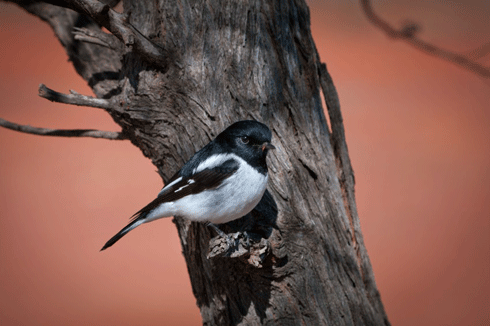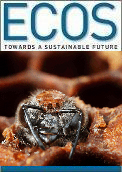
|
Published: 2 May 2012
Revegetation to the rescue of woodland birds
Australia has a good chance of being able to save most of its endangered native woodland birds, according to one of the biggest field studies ever conducted here.

|
|
Endangered woodland bird species such as hooded robins are benefiting from native tree regrowth on farmland. Credit: istockphoto/photosbyash
|
Researchers from the ARC Centre of Excellence for Environmental Decisions (CEED), the Federal Government’s National Environmental Research Program (NERP) and the Australian National University have found that many native birds feared headed for extinction have shown remarkable rates of recovery on farms where regrowth and plantings of native trees are flourishing.
In a huge field science effort, the team monitored 193 sites on 46 farms across southern NSW over ten years, to study the effect on native birds of different ways of managing native vegetation.1
‘It’s an extremely encouraging result,’ says team leader Professor David Lindenmayer.
‘We’ve seen a big increase in numbers of rare and endangered birds on farms in southern Australia, despite the drought. It’s really good news, and a true credit to all the farmers who have worked so hard to protect and restore native vegetation.’
The team’s research, published in the online journal PloS One, indicates that plantings and regrowth areas, where grazing pressure has been reduced, have seen the biggest return of native birds – compared with ‘old growth’ areas still being heavily grazed.
‘We think this is because, in both new planting and regrowth areas, there is an under-storey of young, vigorous trees and shrubs which is attractive to many woodland birds, including rare and endangered species such as the diamond firetail, hooded robin, flame robin and black-chinned honeyeater,’ adds Prof. Lindenmayer.
‘In heavily-grazed old-growth areas, on the other hand, the ground between the trees is more open and less attractive to these types of woodland bird.’
The survey found an average of 29 bird species in new planting areas, 25 in seedling regrowth areas and 20 in areas re-sprouting after fires or land clearing – compared with only 15 bird types in old-growth areas where trees were all mature or ageing.
‘This calls for farm planning at a whole new level, but the hundreds of farmers who we are working with us are already into this. They are very excited by the results we’ve been seeing,’ says Prof. Lindenmayer.
‘For the first time there is a clear measure of the quality of their stewardship of the native landscape, they can see the benefits for themselves – and success is motivating them to try even harder.’
The team’s findings suggest that a range of vegetation growth types are likely to be required in a given farmland area to support the diverse array of bird species that inhabit Australian temperate woodland ecosystems.
The researchers say the results also highlight the inherent conservation value of regrowth woodland and suggest that current policies which allow it to be cleared or thinned need to be carefully re-examined.
The research paper CEED is an Australian Research Council funded Centre of Excellence for Environmental Decisions and NERP is the Commonwealth’s National Environmental Research Program (NERP). Their research tackles key gaps in environmental decision-making, monitoring and adaptive management.
1 David B. Lindenmayer, Amanda R. Northrop-Mackie, Rebecca Montague-Drake, Mason Crane, Damian Michael, Sachiko Okada and Philip Gibbons (2012) Not all kinds of revegetation are created equal: revegetation type influences bird assemblages in threatened Australian woodland ecosystems, PlosOne.



